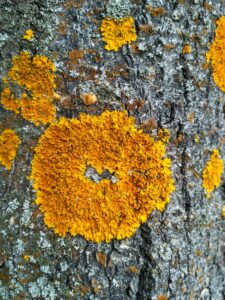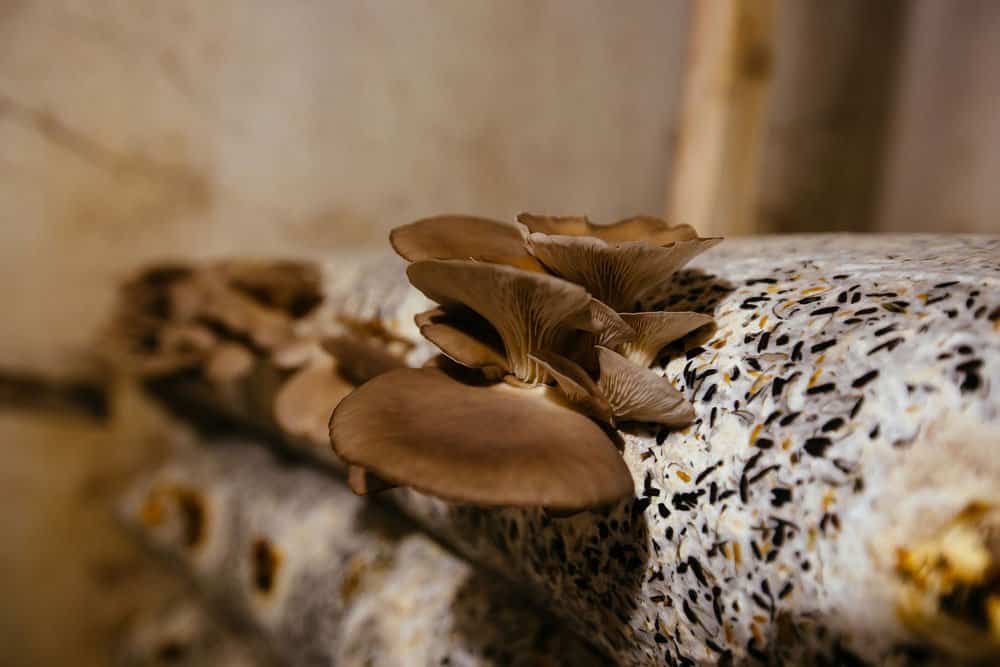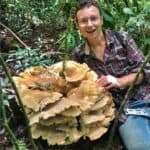Table of Contents
Mushrooms and Fungi can eat almost any natural product you could imagine. They are some of the most effective decomposers in the natural world!
They can eat sugars, cotton, wood, leaves, feces, and even all sorts of pollution! Given time and the right environment they could even eat the very clothes on your body!
Some fungi form symbiotic relationships with plants. They exchange soil nutrients and other environmental services for energy-rich plant sugars.
Feeding Habits of the Fungal Kingdom
Fungi are a diverse group of organisms. Their lifestyles range from single-celled yeasts to multicellular filamentous fungi. Since this kingdom is diverse, you can expect many different food sources.
Fungi rely on consuming other living organisms to receive their energy and nutrients.
Unlike plants, they do not get energy from the sun through the process of photosynthesis.
Fungi’s food sources include energy-rich carbon-based molecules like sugars and carbohydrates. From these materials, they also extract the minerals and nutrients they need. They have a particularly important niche as decomposers in ecosystems.
Fungi Food Sources:
- Woody Plant Tissues: These tissues are rich in a natural compound called lignin. Fungi are the most effective consumers of lignin-rich plant tissues.
- Leafy Plant Tissues: These are rich in cellulose. This is what you might find in grass clippings. While these environments are often bacterial dominated, fungi also play an important role.
- Bacteria: Many fungi consume bacteria. In some cases, they may even attract and cultivate bacteria as a food source.
- Simple Sugars: This can be from fruits, table sugar, honey, or any other form of sugar. For example, the fermentation of wine by yeast.
- Insects: Some fungi consume insects. They may be actively hunting insects while others are pathogens.
- Living Plants: Some fungi are parasitic or pathogenic towards plants. Others form symbiotic relationships with the roots of trees.
- Other Fungi: Some fungi either consume the dead or living tissues of other fungi. A classic example is the soil-dwelling Trichoderma which consumes other fungi.
- Other Complex Compounds: This includes oils, soaps, resins, and other hard to degrade compounds.
Fungi that form Mycorrhizal Relationships
Certain fungi form symbiotic relationships with the roots of trees. In this case, fungi feed on plant sugars exuded by the plant roots. In exchange for this, fungi provide the trees with nutrients and environmental services.
These services include:
- Increased water availability
- Defense against plant pathogens
- Improvement of soil biology.
This symbiosis is also known as a mycorrhizal relationship. There are different types of mycorrhizal relationships. Fungi that form mycorrhizal relationships may or may not form mushrooms.
- Mycorrhizal Fungi that don’t produce Mushrooms
Most mycorrhizal fungi NEVER produce mushrooms. These associate with the roots of over 95% of the plant kingdom. This relationship is as ancient as that of plants on land. Instead of producing mushrooms, they reproduce with large soil-borne spores. - Mushroom forming Mycorrhizal Fungi.
These fungi evolved from organisms that were free-living decomposers. With time and a little help from the tree, these fungi formed this relationship with plant roots. Unlike their non-mushroom forming counterpart, they only associate with 5% of plant diversity!
The most common type of mycorrhizal mushrooms is Ectomycorrhizal Mushrooms. These include gourmet mushroom slike chanterelles, boletes, black trumpets, and even truffles.
What do Mushrooms eat?
Mushrooms are the reproductive structure of certain filamentous fungi. Most mushroom-forming fungi eat woody plant materials. They also consume animal manure, insects, and bacteria. Some form mycorrhizal relationships.
Some examples:
- Oyster Mushrooms (Pleurotus osteroisis): Diverse diet. Potential food sources include wood, straw, coffee grounds, and agricultural waste.
- White Button Mushroom (Agaricus bisporus): Feeds on composted animal manure.
- Shiitake (Lentinula edodes): Feeds on wood, most Oak.
- Chanterelles (Cantharellus sp.): Form symbiotic relationships with the roots of trees.
- Cordyceps Mushrooms (Cordyceps sp.): Different forms of insects, often larvae.
- Lobster Mushroom: Feeds as a parasite on the tissues of mushroom-forming fungi.
How do Mushroom forming Fungi eat?
Mushroom forming fungi live as filamentous mycelium. This mycelium grows as minute white fibers that grow in a web-like pattern. You may have seen this within decomposing wood or under the leaf litter.
On the surface of these miniature filaments, the fungi exude digestive enzymes. These enzymes work to break down the substrate until the fungi absorb the nutrients. Only once the fungi obtain enough energy and nutrients will they form mushrooms
Other Weird Things That Fungi Eat
Fungi That Eat Pollution
As mentioned, fungi can eat pretty much any natural material. This includes many types of compounds that cause environmental pollution. Mycoremediation is the term used for the application of fungi in environmental remediation.
Pollutants that Fungi eat and may Remediate
- Petroleum hydrocarbons (Oil, Diesel, Crude Oil, Plastic, etc.)
- Polycyclic aromatic hydrocarbons (Present in fossil fuels)
- Halogenated organic compounds
- Synthetic Dyes
- Pesticides
Can Fungi eat Plastic?
Certain forms of fungi can eat and break down plastic. This gives potential in utilizing fungi to help remediate plastic pollution. By consuming plastic, they transform it into fungal tissues. Afterward, it can decompose and be reincorporated into the food chain.
While fungi do eat plastic, conducting this on a large scale for remediation is not viable at the moment.

What do Lichens eat?
Lichens are interesting fungi that often occur on the surface of rocks and trees. They form a symbiosis with algae that undergo photosynthesis to produce energy. In this relationship, the fungi provide important minerals and habitats for the algae. In exchange, the fungi receive sugars produced by the algae.
Fungi that feed on living Plants
Certain fungi are parasitic or pathogenic to plants. They are the BIGGEST cause of plant disease. More fungi cause plant diseases than any other kingdom of life!
Fungal plant diseases play important roles in maintaining ecological balances within natural ecosystems. In agriculture, fungi are one of the leading causes of plant disease and losses.
Common Fungal Plant Pests
- Powdery Mildew
- Damping-Off
- Root Rot
- Botrytis Gray Mold
- Scab of Apple and Crabapple
- Dutch Elm Disease
- Sudden Oak Death
- Rusts
- Armillaria
Fungi that feed on Insects
While many fungi feed on living insects, the most famous is the cordyceps mushrooms. They are not only fascinating, but some have peculiar medicinal properties.
Some cordyceps can manipulate the behavior and bodily functions of ants! These are Ophiocordyceps unilateralis and occur in tropical rainforests. At the end of the life cycle, the mushroom fruiting body erupts from the head of the ant!
Sources:
- Dix, Neville J., ed. Fungal ecology. Springer Science & Business Media, 2012.
- Dutta, Sayan & Hyder, Md. (2017). Mycoremediation – a potential tool for sustainable management.
- Smith, Sally E., and David J. Read. Mycorrhizal symbiosis. Academic Press, 2010.

